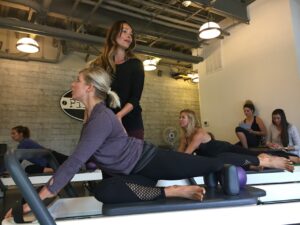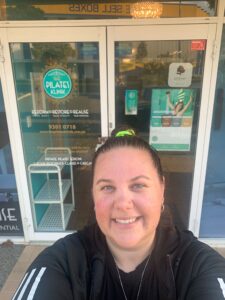*Disclaimer: I have debated for some time, whether or not to write this blog post. After sharing this with a few people in the industry and receiving their positive feedback i’m posting for all to read. I’ve become frustrated with having to defend our knowledge and experience. Also, having to repeat over and over either via email, on the phone or in person some of what is written below. I avoid making broad statements or stereotype, however my experience over the past two years has revealed that for the vast majority, the following information is accurate. Like all professions, there are the good, the bad and the ugly. I would be remiss if I did not say that there are some absolutely gifted Pilates training instructors within Perth who are phenomenal in their diagnostic abilities to get a client pain free. I am hopeful we can connect and work with more of these professionals in the future.
What is Clinical Pilates:
Two very popular google searches, when people are looking to eliminate injuries, aches and pains are “What is Clinical Pilates?” and, “Clinical Pilates near me” due to the recent rise in Pilates’ popularity. Although the number of people searching these phrases has increased heavily in recent times, very few people understand what the term “Clinical Pilates” means or where it came from.
Clinical Pilates is a relatively new term, it was created original to describe a physiotherapist creating an exercise program of pilates movements to help a patient with whatever issue they presented with. In the past few years, a Physiotherapy training company tried to trademark the term but was denied, it was determined that Clinical Pilates is a broad term with a more accurate meaning of, “Pilates that has been tailored for an individuals specific needs”. Sadly, many physiotherapy websites still describe Clinical Pilates as Pilates directed by a physiotherapist.
The need to stand out:
Physiotherapy is a very competitive, and crammed, market place. Many practises try to separate themselves from their competition by offering as many services as possible. Acupuncture, hydrotherapy, bike fits, dry needling, real time ultra sound, group high intensity interval training and many more are all apart of a long line that now includes Pilates. The high level of competition also makes some clinics very aggressive in their tactics to attract and keep clients.
A brief history:
Joseph Pilates tested and refined his philosophies on physical fitness while being held captive during world war 1. After the War, German officials asked him to teach his methods to the Army at which point he left the country for New York.
Between 1926 and 1977 Joseph Pilates and his wife Clara taught Pilates to thousands and thousands of students. After his death in 1967 his work continued to gain popularity due in part to his students who went on to further the method and spread its reach. There were 10 “elders” who carried on the lineage from Joseph, continuing to refine their approach as they worked with thousands and thousands more clients.
In the late 70’s and early 80’s hollywood celebrities became hooked on Pilates and the media spread the word, bringing Pilates into the Main steam. Today tens of millions of people utilise pilates for injury prevention, recovery, elite performance improvements and general health and wellbeing all over the world. The effectiveness of the original method is still just as powerful today as when Joseph was practising himself.
Learning The Pilates Method:
Many Physiotherapists choose to go through a qualification in what is called Clinical Pilates rather than a full comprehensive Pilates certification. The difference in each may shock you. DMA Clinical Pilates, one of Australia largest certifying companies, runs a nationally recognised course that compromises of approximately 6 hours of online learning as a pre requisite to their 3 days course. 3 days, that’s it.
The PMA (Pilates Method Alliance) did a survey of the largest Pilates educators in the world and found that Comprehensive Pilates certifications typically took between 12-24 months to complete and included an average of 600 hours of training. For most instructors, this marks the very beginning of their career and is followed by hundreds of hours taking, observing and additional learning. Pilates is very much an apprenticeship, whereas a teacher passes on their years of knowledge and wisdom to a student. The original students of Joseph Pilates are actually known as “the elders”. Such is the history of sharing wisdom this way that one of the worlds largest Pilates educators created an additional program called “passing the torch” so that the experience of some of the industries leaders could be preserved and shared to the next generation.
To try and boil down the Method that has been developed, honed and refined over the past 90 years into a 3 day workshop is, in my eyes, shocking. What’s worse, i’ve had people straight out told by Physiotherapists that they are not ready for a Pilates Studio and must only do Clinical Pilates with them! *See “the need to stand out” above. As an example, Kristen our Head instructor, has been teaching clients for more than 15 years, holds 2 comprehensively certified certifications, is a master trainer through Balanced Body and is a member of 3 associations both here and the US where she was privileged enough to spend some time with 2 of Josephs original students. Across mentoring, teacher training and working with clients Kristen has spent well over 10,000 hours in the Pilates Method and is one of the most qualified training instructors in Perth.
“To reduce a system that has been used to entirely transform people’s lives through physical movement education into a machine for rehab exercises only and then sell it off as some higher form is appalling.”
Health Rebates:
Sometimes, the main driving factor behind a clients decision on where to begin their Pilates journey are health rebates. I’ve spoken with people who were told, “You can only claim Clinical Pilates with a physiotherapist”. The code a physiotherapist uses when allowing people to claim reformer pilates sessions is actually “group fitness 561”. However, many people are able to receive rebates through a recognised pilates practitioner as well. SGIO, HBF, NIB, AHM, HCF CBHS and a few others allow recognised Pilates practitioners to have provider numbers for their members to receive rebates. I usually encourage those enquiring to seek out the experience and qualification of the practitioner they are considering beyond a health rebates availability. It is a shame the industry is moving away from covering preventative health services but that is a different blog post! It is a cliché to say you are not comparing apples to apples, however, in this case it is apt.
A Final Thought:
As with all things that gain popularity on such a large scale, Pilates has been watered down and twisted for commercial gains in many arenas. Floor Pilates can be found in any large gym with dozens of people crammed into a room doing endless crunches, Yoga studios boast classes like Yogalates and Hot Pilates for “a twist”, and of course, there are hundreds of DVD’s that eliminate the need for an instructor all together. In my eyes, Physiotherapists are just the next in a long line to “discover” Pilates and a quick way to incorporate it to their revenue streams. It would be unfair to not point out that their are many passionate Physiotherapists who recognise how well The Pilates method marries with their profession and who seek out a comprehensive certification to fully learn the method. I’ve met two such practitioners who are excellent at what they do and look forward to meeting others.
The original elders fiercely protect the teachings of Joseph. Many second and third generation teachers are very proud of their Pilates lineage and the knowledge that those who came before them imparted. Those that have learnt through years of experience how best to help clients connect to, and heal, their bodies continue to progress The Pilates Method today.
Ultimately, as with most things, it comes down to the individual behind the service. Sadly, i have come to know many who are very aggressively trying to own Pilates and quash anyone who does not come from a Physiotherapy background. Seeing Pilates gain momentum and popularity as a way to heal the bodies imbalances in Australia’s mainstream health care is a great thing, my hope is that we are able to build a network of health care professionals that are passionate about helping people and are focused on doing what is best for their clients rather than putting business first.
Michael



